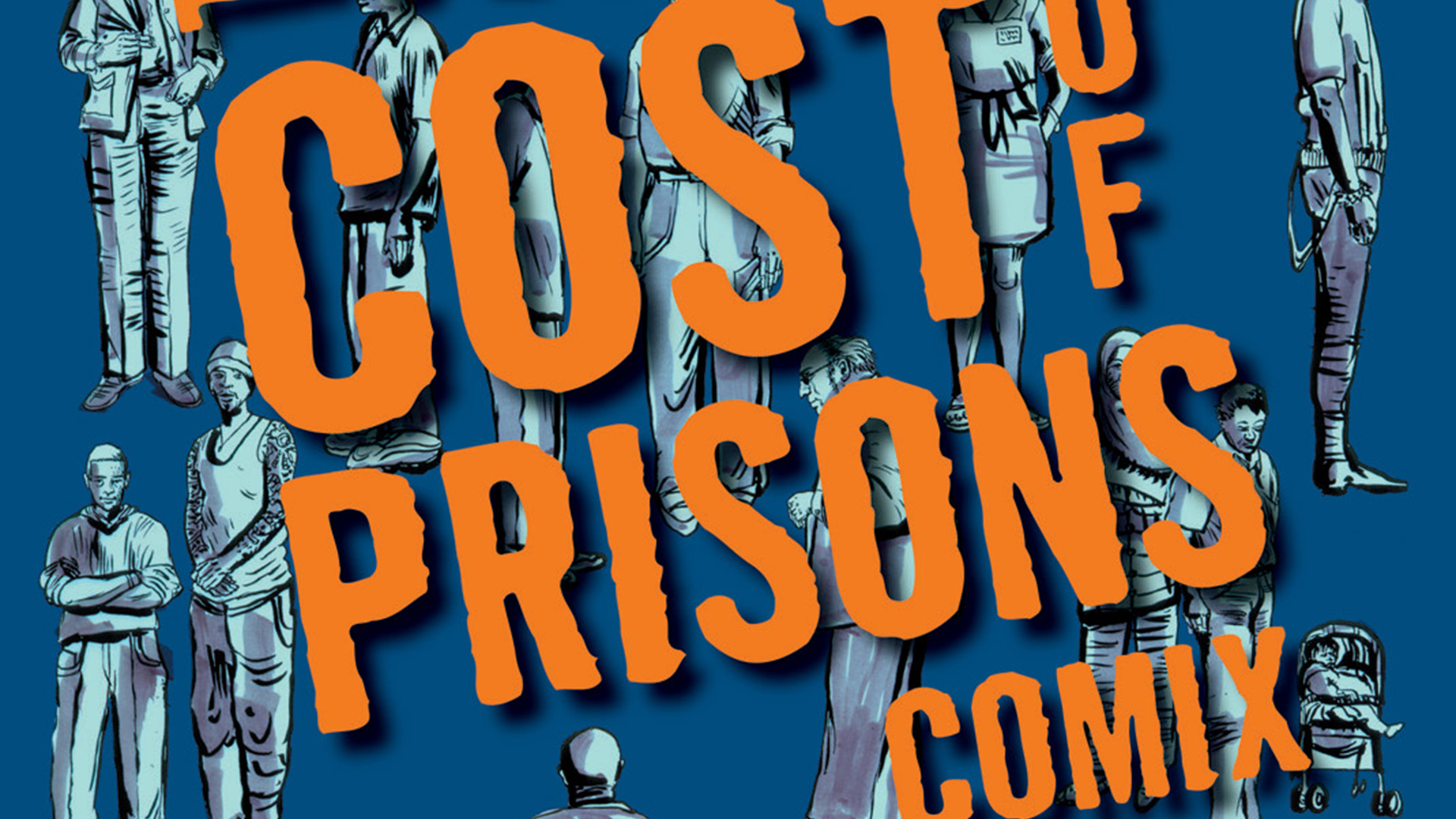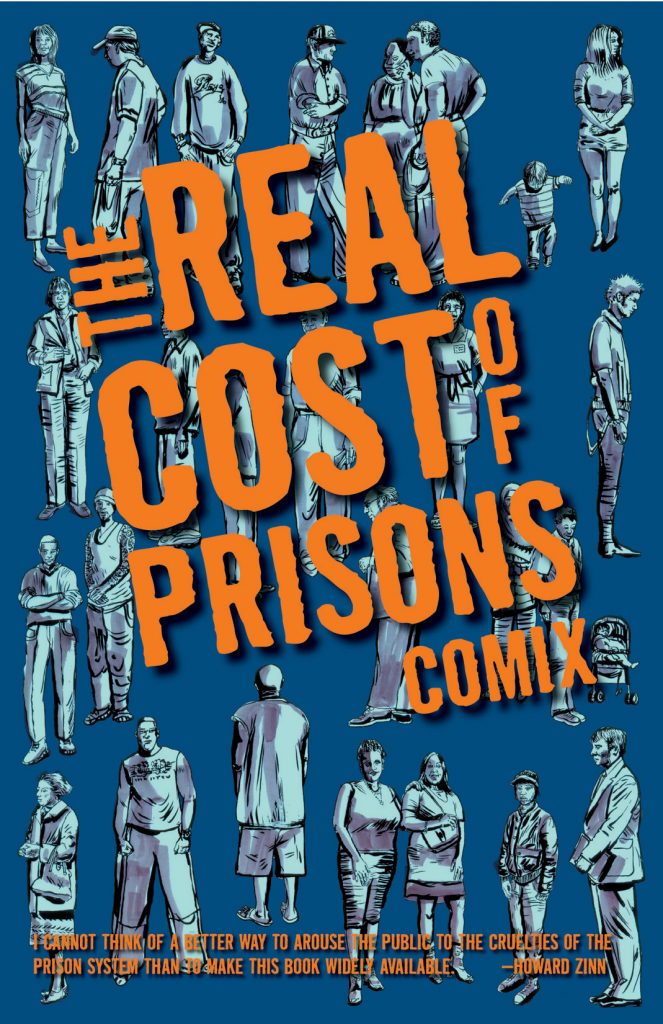By Christine C
Our Bodies Ourselves
PM Press has recently published “The Real Cost of Prisons Comix,” three comic books produced by the Real Cost of Prison Projects in one volume. The book includes:
“Prison Town: Paying the Price” tells the story of how the financing and site locations of prisons affects the people of rural communities in which prison are built as well as urban communities from where the majority of incarcerated people come from. Illustrated by Kevin Pyle; written by Craig Gilmore and Kevin Pyle.
“Prisoners of the War on Drugs” includes the history of the war on drugs, mandatory minimums, how racism creates harsher sentences for people of color, stories on how the war on drugs works against women, three strikes laws, obstacles to coming home after incarceration, and how mass incarceration destabilizes neighborhoods. Illustrated by Sabrina Jones; written by Ellen Miller-Mack, Sabrina Jones and Lois Ahrens.
“Prisoners of a Hard Life: Women and Their Children” includes stories about women trapped by mandatory sentencing and the “costs” of incarceration for women and their families. Illustrated by Susan Willmarth; written by Ellen Miller-Mack, Susan Willmarth and Lois Ahrens.
The book also features more than 30 responses from activists, teachers, health practitioners, prisoners and others about how they have used the comic books in their organizing.
The number of incarcerated women has risen at a rate nearly double that of men in recent decades, in large part due to mandatory sentencing and draconian drug laws. There is now believed to be about 200,000 incarcerated women in U.S. prisons, jails and immigration detention centers.
In an article published at Our Bodies Ourselves, Ellen Miller-Mack, a co-author of two of the comics, describes the work of numerous anti-prison activists addressing problems faced by women prisoners, especially around issues of family preservation and reproductive rights. For instance, in 2000, the Illinois legislature prohibited the shackling of women prisoners while in labor — something that The Advocacy Project had been working on for years.
Shackling a woman who is giving birth sounds so ridiculous, like something from a different era done with no understanding or respect for a woman’s health, or the health of her infant.
Except that it’s still happening today. In fact, California and Illinois are the only states with laws on the books regulating the use of restraints on pregnant women.
Just this past July, Rachel wrote about an immigrant woman in Tennessee who was pulled over by police as she was leaving a prenatal clinic with her three children. Juana Villegas DeLaPaz did not have a current driver’s license and was subsequently jailed. She was taken to a local hospital when she went into labor that night, but the prison guard disconnected the phone so DeLaPaz couldn’t make outgoing calls and she didn’t see her husband. She was ankle-cuffed to the bed at all times except for a bathroom break. (Read an update of her case here.)
According to a report from Amnesty International, “Abuse of Women in Custody: Sexual Misconduct and Shackling of Pregnant Women,” 23 states and the U.S. Bureau of Prisons specifically permit shackling women in labor. And Louisiana and the U.S. Bureau of prisons have no restrictions on restraints other than specifying that pregnant women should not be restrained face-down in four-point restraints.
I’ll pause while you digest that sentence.
Sexual abuse is also a widespread concern. Last year Nicole Summer, writing at RH Reality Check, looked at how the prison system addresses sexual abuse against incarcerated women — most of which is perpetuated by prison guards — and prisoners’ access to contraception and abortion.
“Surviving a sexual assault and then navigating the health care system to receive adequate counseling and reproductive medical attention is daunting enough for those who walk freely on the outside. For women in prison, these hurdles can seem insurmountable,” writes Summer.
Miller-Mack’s article identifies a number of organizations working to address these and other issues, as well as resources for learning more about the conditions and realities of women in prison.
Plus: Miriam at Feministing recently live-blogged the Critical Resistance 10 conference. Check out her entries, particularly this one on prisons as a tool of reproductive oppression.







